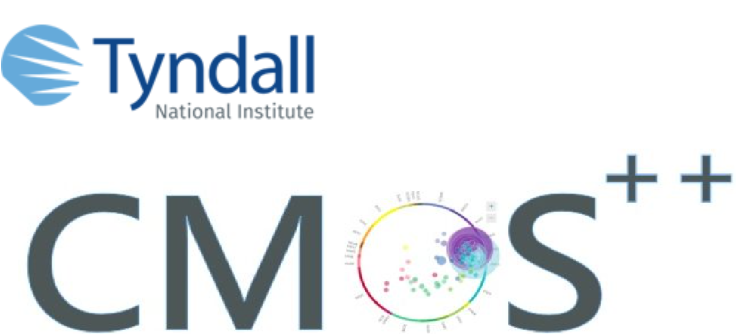Every aspect of basic science as well as commercial production of technologies is dependent upon the capacity of instruments and methodologies to measure (identify and quantify) matter with a corresponding sensitivity and at relevant spatial, temporal and energy resolution.
In particular, the set of materials and devices developed by the researchers at CMOS++ require multimode (spectroscopy, microscopy and electrical testing) analysis of heterogeneous or hierarchical volumes composed of nanoscale features, interfaces and surfaces.
Addressing these characterisation challenges and following the predications of the IRDS Metrology roadmap, the Advanced Characterisation pillar at CMOS++ develops the following main characterisation areas and corresponding metrologies: critical dimension related parameters determination by correlative analysis; hybrid characterisations providing information recorded by different characterisation modalities and in-situ characterisations, time resolved analysis adding temporal dimension to our measurements.
Typically, there is not a single characterization method that provides all of the information necessary to describe a given property of a material or device. The complexity and dimensions of the materials and devices often result in different measured values for nominally the same property of a given material. Hence, here we apply correlative and 3D imaging approach whereby we relate electrical parameter extraction data to conventional and 3D electron microscopy to extract dimensional and surface states information critical to device performance.
On the other hand, hybrid characterisations provide information recorded by different modalities on a same instrument, such as, for example, mixing of nano-scale topography and recording of piezoelectric, ferroelectric, ferromagnetic and magnetoelectric responses. During any of these techniques, an atomic force microscopy cantilever with a sharp tip is scanned across a sample surface where cumulative forcesbetween atoms in the tip and surface are probed to yield a nanometer-resolution topography map. Using conductive probes, nano-scale electric properties can be measured and using probes coated with thin layers of magnetic material, magnetic properties can be detected.
Observing processes “on site” as they are occurring and under changing external stimuli is the paramount goal of in-situ techniques. Various in situ and operandi techniques have emerged and are gaining importance in different areas of science and engineering. Among them, in situ electron microscopy is probably the most versatile and mature technique. We develop in-situ electron microscopy for analysis of experimental conditions related to CMOS processing such as semiconductor crystal growth, thermal stability of interface layers and the influence of ion beam damage in semiconductors.

